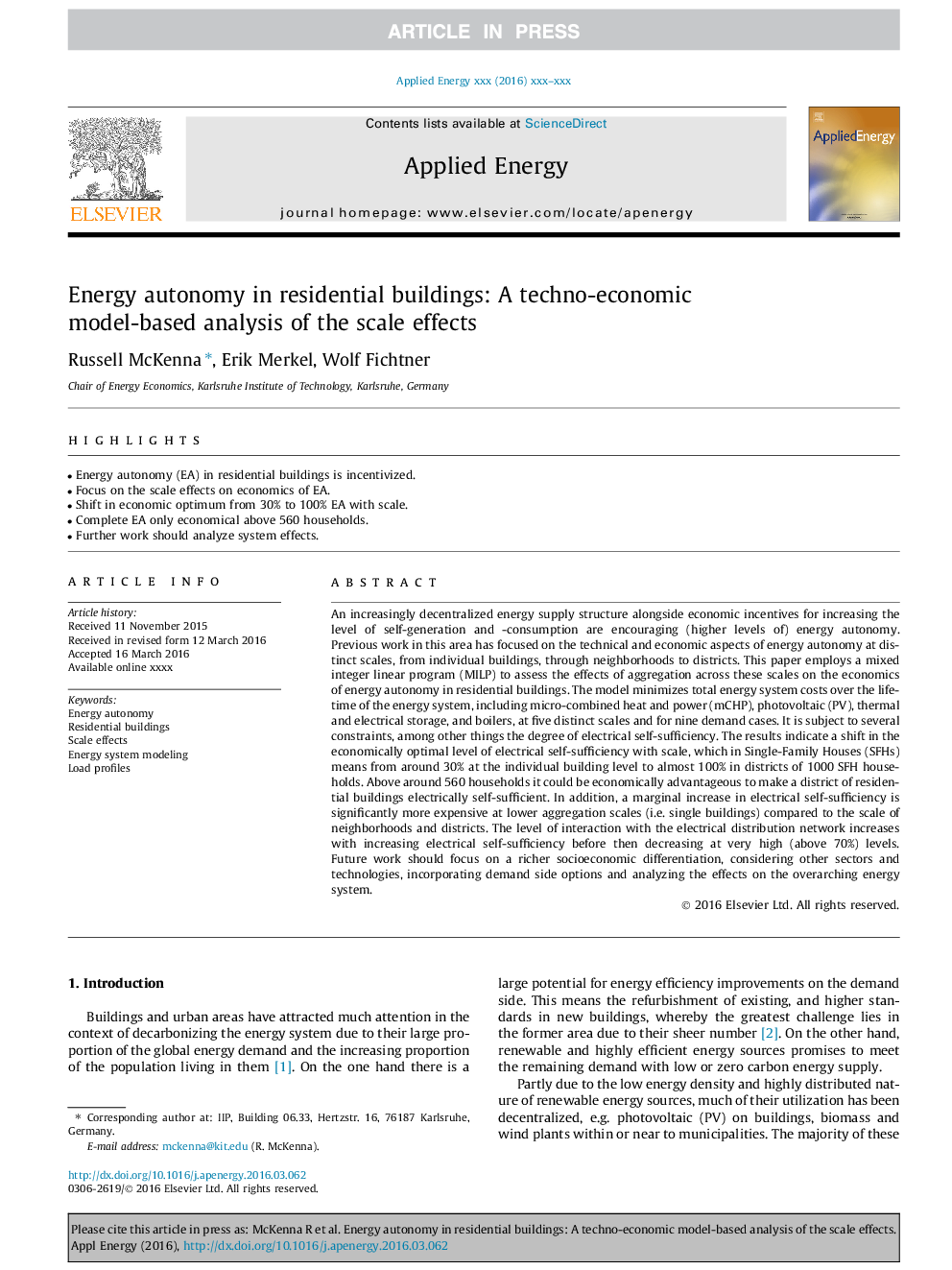| کد مقاله | کد نشریه | سال انتشار | مقاله انگلیسی | نسخه تمام متن |
|---|---|---|---|---|
| 4916792 | 1428101 | 2017 | 16 صفحه PDF | دانلود رایگان |
عنوان انگلیسی مقاله ISI
Energy autonomy in residential buildings: A techno-economic model-based analysis of the scale effects
ترجمه فارسی عنوان
استقلال انرژی در ساختمان های مسکونی: یک تحلیل تکنولوژیکی مبتنی بر مدل از اثرات مقیاس
دانلود مقاله + سفارش ترجمه
دانلود مقاله ISI انگلیسی
رایگان برای ایرانیان
کلمات کلیدی
استقلال انرژی، ساختمان های مسکونی، اثرات مقیاس، مدل سازی انرژی سیستم، پروفیل های بار
موضوعات مرتبط
مهندسی و علوم پایه
مهندسی انرژی
مهندسی انرژی و فناوری های برق
چکیده انگلیسی
An increasingly decentralized energy supply structure alongside economic incentives for increasing the level of self-generation and -consumption are encouraging (higher levels of) energy autonomy. Previous work in this area has focused on the technical and economic aspects of energy autonomy at distinct scales, from individual buildings, through neighborhoods to districts. This paper employs a mixed integer linear program (MILP) to assess the effects of aggregation across these scales on the economics of energy autonomy in residential buildings. The model minimizes total energy system costs over the lifetime of the energy system, including micro-combined heat and power (mCHP), photovoltaic (PV), thermal and electrical storage, and boilers, at five distinct scales and for nine demand cases. It is subject to several constraints, among other things the degree of electrical self-sufficiency. The results indicate a shift in the economically optimal level of electrical self-sufficiency with scale, which in Single-Family Houses (SFHs) means from around 30% at the individual building level to almost 100% in districts of 1000 SFH households. Above around 560 households it could be economically advantageous to make a district of residential buildings electrically self-sufficient. In addition, a marginal increase in electrical self-sufficiency is significantly more expensive at lower aggregation scales (i.e. single buildings) compared to the scale of neighborhoods and districts. The level of interaction with the electrical distribution network increases with increasing electrical self-sufficiency before then decreasing at very high (above 70%) levels. Future work should focus on a richer socioeconomic differentiation, considering other sectors and technologies, incorporating demand side options and analyzing the effects on the overarching energy system.
ناشر
Database: Elsevier - ScienceDirect (ساینس دایرکت)
Journal: Applied Energy - Volume 189, 1 March 2017, Pages 800-815
Journal: Applied Energy - Volume 189, 1 March 2017, Pages 800-815
نویسندگان
Russell McKenna, Erik Merkel, Wolf Fichtner,
